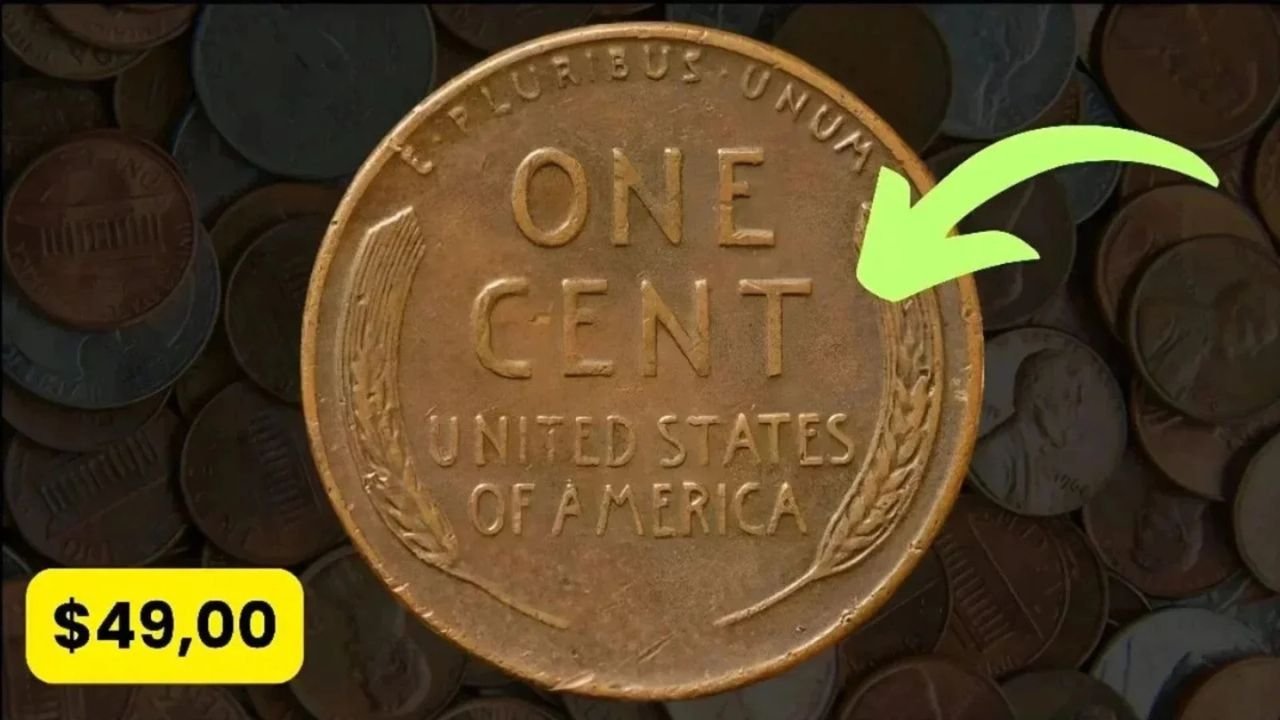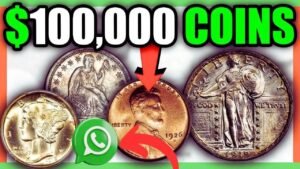The Lincoln Wheat Penny is one of the most beloved coins in American history. First introduced in 1909, it’s cherished by both casual collectors and serious numismatists. While most Wheat Pennies are only worth a few cents, some rare versions have sold for as much as \$49,000.
But could one of these rare pennies still be hiding in your change jar or tucked away in an old coin roll? Let’s break down what makes them so valuable and how you can spot one.
What Is the Lincoln Wheat Penny?
The Lincoln Wheat Penny, also called the “Wheat Cent,” was minted in the United States from 1909 to 1958.
- Designer: Victor David Brenner
- Obverse (front): Portrait of President Abraham Lincoln
- Reverse (back): Two wheat stalks (hence the nickname “Wheat Penny”)
This was also the first U.S. coin to feature a real historical figure, making it a groundbreaking piece of American coinage.
Why Are Some Wheat Pennies Worth Thousands?
Not every Wheat Penny is valuable. Most are worth only face value or a small premium. But certain rare versions have sold for tens of thousands at auctions. Here’s why:
- Minting Errors – Double-die strikes or off-center errors can make a penny extremely rare.
- Low Mintage – Some years had very few coins minted, making them harder to find.
- Material – For example, some 1943 Wheat Pennies were accidentally struck in bronze instead of steel, making them worth a fortune.
- Condition – Uncirculated pennies with sharp details fetch higher prices.
- Mint Marks – Small letters under the year (D for Denver, S for San Francisco, none for Philadelphia) can significantly affect value.
One of the most famous examples is the 1943 Bronze Lincoln Wheat Penny, which has sold for up to \$49,000 depending on condition.
Key Facts About Valuable Lincoln Wheat Pennies
| Feature | Details |
|---|---|
| Years Minted | 1909–1958 |
| Designer | Victor David Brenner |
| Valuable Variants | 1909-S VDB, 1914-D, 1931-S, 1943 Bronze |
| Mint Marks | D (Denver), S (San Francisco), none (Philadelphia) |
| Highest Recorded Value | Up to \$49,000 |
| Rarity Factors | Errors, low mintage, material, condition |
Are Valuable Wheat Pennies Still in Circulation?
It’s rare — but not impossible. Most high-value Wheat Pennies have been collected or pulled from circulation long ago. However, some may still be hiding in:
- Old piggy banks or coin jars
- Inherited collections from family members
- Bank coin rolls
- Flea markets, yard sales, or thrift store finds
Collectors occasionally stumble across rare finds in unexpected places, so it’s always worth checking.
How to Spot a Valuable Wheat Penny
If you find a Wheat Penny, here’s what to look for:
- Year: Rare years include 1909-S VDB, 1914-D, 1931-S, and 1943 bronze.
- Mint Mark: Check below the year for “D” (Denver) or “S” (San Francisco).
- Condition: Coins with minimal wear and sharp detail are more valuable.
- Errors: Look for doubled numbers, letters, or off-center strikes.
If you think you have something valuable, consider having it graded by a professional service like PCGS or NGC.
Understanding Key Coin Terms
| Term | Simple Explanation |
|---|---|
| Numismatic | Related to coin collecting and study |
| Mintage | Total number of coins produced in a year |
| Mint Mark | Letter showing where the coin was minted |
| Double-Die Error | A design that appears doubled |
| Uncirculated | A coin in mint condition with no wear |
How to Check a Wheat Penny’s Value
If you come across a Wheat Penny, here’s how to evaluate it:
- Inspect carefully with a magnifying glass.
- Compare with coin value guides such as the Red Book.
- Get a professional appraisal from a reputable coin dealer.
- Preserve the coin in a protective holder to prevent damage.
Market Trends for Wheat Pennies
The collector market for Wheat Pennies remains strong. Rare examples like the 1943 bronze penny and the 1909-S VDB continue to command high prices. Recent auctions have seen some of these coins sell for between \$40,000 and \$49,000, depending on grade and rarity.
Tips for Collectors
If you’re interested in collecting Wheat Pennies:
- Start small with affordable, common Wheat Pennies.
- Join a community such as local coin clubs or online forums.
- Stay updated on auction results and coin news.
- Beware of counterfeits when buying rare, high-value coins.
FAQ: Lincoln Wheat Penny Value
Q: What is the most valuable Lincoln Wheat Penny?
A: The 1943 Bronze Wheat Penny and the 1909-S VDB are among the most valuable, selling for tens of thousands.
Q: Can you still find Wheat Pennies in circulation?
A: Rare, but possible. They sometimes turn up in bank rolls, thrift stores, or inherited collections.
Q: What mint marks should I look for?
A: Look for “S” (San Francisco) and “D” (Denver), which can make a penny rarer than Philadelphia issues.
Q: How much is a common Wheat Penny worth?
A: Most common Wheat Pennies are worth between 5 cents and \$1, depending on condition.
Q: Should I clean a Wheat Penny before selling?
A: No. Cleaning can damage the coin’s value. Always leave it as-is.
Final Thoughts
The Lincoln Wheat Penny is more than just small change — it’s a piece of American history. While most are worth little more than face value, rare versions like the 1943 bronze penny can bring as much as \$49,000 at auction.
So next time you sort through spare change or inherited coins, take a closer look. You might just discover a hidden treasure worth thousands.




